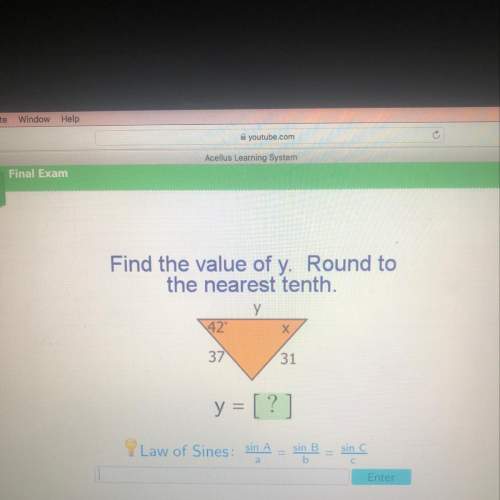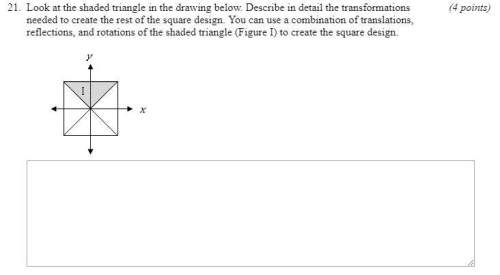
Mathematics, 16.10.2020 03:01 Lesquirrel
Given that ∠2≅∠6 . Which theorem proves that d∥e?
(a)converse of the alternate interior angles theorem
(b)converse of the alternate exterior angles theorem
(c)alternate exterior angles theorem
(d)alternate interior angles theorem

Answers: 3


Other questions on the subject: Mathematics

Mathematics, 21.06.2019 16:40, naomicervero
Which of the following is the correct equation for this function? a. y= (x+4)(x+2) b. y=x^2+ 3x – 2 c. y+ 2 = – 2(x+3)^2 d. y+ 2 = 2(x+3)^2
Answers: 1

Mathematics, 21.06.2019 16:50, animexcartoons209
The vertices of a triangle are a(7,5), b(4,2), c(9,2). what is m
Answers: 2

Mathematics, 21.06.2019 17:30, milkshakegrande101
Which of the following tables represents exponential functions?
Answers: 1

Mathematics, 21.06.2019 18:30, mstrish71oteauw
Two angles are complementary. the large angle is 36 more than the smaller angle. what is the measure of the large angle?
Answers: 1
You know the right answer?
Given that ∠2≅∠6 . Which theorem proves that d∥e?
(a)converse of the alternate interior angles theo...
Questions in other subjects:

Health, 29.11.2021 19:00

Mathematics, 29.11.2021 19:00




Business, 29.11.2021 19:00



Mathematics, 29.11.2021 19:00





